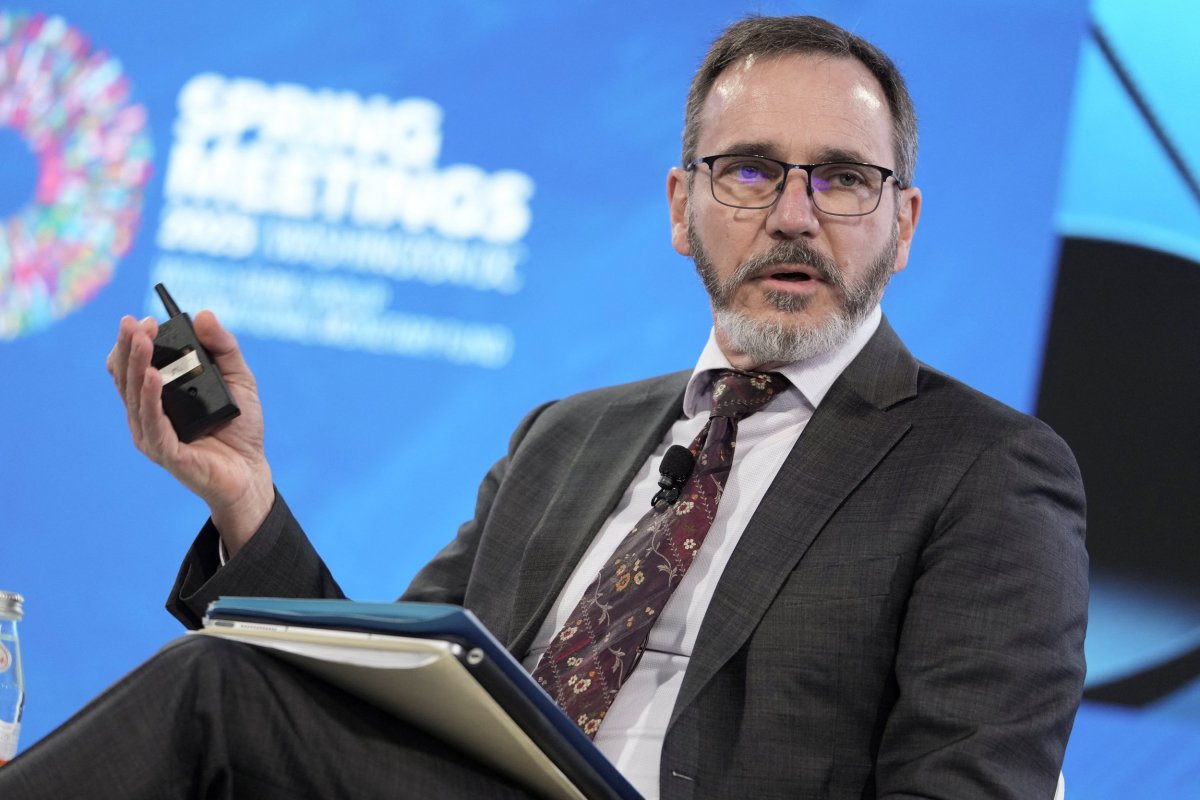The International Monetary Fund (IMF) has upgraded its global growth forecasts for 2025, citing a weakened dollar, financial resilience in the face of economic headwinds, as well as the White House rolling back many of the tariffs threatened earlier in the year.
On Tuesday, the global financial institution released its updated World Economic Outlook, which predicts global growth of 3 percent in 2025 and 3.1 percent in 2026. This is up from 2.8 and 3 percent, respectively, in its April report.
Why It Matters
Since assuming office in January, President Donald Trump’s intermittent threats of high tariffs, and the sweeping announcement of reciprocal duties in early April, have rattled global markets and raised concerns over the prospect of a major economic downturn both in the U.S. and worldwide.
What To Know
The IMF gave several reasons for upgrading the global economic outlook. These included a “considerably” weakened dollar, which it said “provided some monetary policy space for emerging market and developing economies. IMF chief economist Pierre-Olivier Gourinchas also cited actions by certain governments to increase growth, as well as a “strong surge” in exports to the U.S. as businesses attempted to front-load due to concerns about tariffs coming into effect.
The IMF also noted the multiple pauses that have been placed on tariffs since the April report, including the two delays to Trump’s reciprocal tariffs, due to end this week, and the May agreement between China and the U.S. which lowers rates until August 12.
“Following an unprecedented escalation in tariffs imposed on the rest of the world in April, the United States partly reversed course, pausing the higher tariffs for most of its trading partners,” Gourinchas said in remarks delivered Tuesday.
These have brought the effective U.S. tariff rate underlying the new projections to 17.3 percent, compared to 24.4 percent in April.
“One reason growth has remained resilient is that the policies announced [in April] were never fully implemented,” said Pinelopi Goldberg, professor of economics at Yale University and former chief economist of the World Bank.
“This doesn’t mean economists’ warnings were misguided. Often, our role is to raise the alarm—hoping policymakers will respond,” she told Newsweek. “In this case, while it may not be accurate to say the U.S. government is responding directly to economic experts, it is certainly responding to financial markets.”

Oliver Contreras/AFP via Getty Images
Most countries in the IMF’s projections have received a modest growth upgrade compared to the April report. This includes the U.S., which saw 0.1-percent bump for this year, and China, with an upward revision of 0.8 percent.
“Despite these welcome developments, tariffs remain historically high, and global policy remains highly uncertain, with only a few countries having reached fully-fleshed out trade agreements,” Gourinchas said, adding that the resilience of global markets to tariffs “is welcome, but it is also tenuous.”
The global growth forecasts of 3 percent for 2025 and 3.1 percent for 2026 still sit below the 3.3 percent projected for both years in January, before Trump returned to office.
What People Are Saying
Pierre-Olivier Gourinchas, economic counselor and director of the IMF Research Department, said: “While the trade shock could turn out to be less severe than initially feared, it is still sizable, and evidence is mounting that it is hurting the global economy.”
“Without comprehensive agreements, the ongoing trade uncertainty could increasingly weigh on investment and activity,” he added. “Further, while exports front-loading has supported global activity so far, firms could become vulnerable if the demand for stockpiled goods does not materialize.”
Former Commerce Secretary Wilbur Ross described tariff reversals by the administration as “really just part of the normal give and take in the trade negotiations.”
“The very fact that [Trump] put these up for negotiation means that there was some flexibility in the original proposal,” Ross told Newsweek earlier this month.
Pinelopi Goldberg, a former chief economist at the World Bank, told Newsweek: “If tariffs settle in the 15–20-percent range, I would not expect dramatic near-term effects on the U.S. economy. That said, there is a significant political cost—especially as many of these tariffs target long-standing U.S. allies. The implications of that cost will likely become evident over the longer term.”
“Even if tariffs increase further, I don’t foresee major economic changes in 2025,” she added. “It’s important to distinguish between short- and long-run effects. In the short run, most countries are adopting pragmatic strategies—choosing to negotiate with the U.S. rather than retaliating. In the long run, a more rational response may be gradual decoupling from the U.S. and seeking alternative trade partners globally.”
What Happens Next?
The U.S. has so far secured a handful of trade deals, including with Indonesia, Japan and, most recently, the European Union. For the remaining countries that were handed reciprocal tariffs on April 2, the White House has set a deadline of August 1 before these will resume alongside some new, higher duties on Canada and Mexico.
Meanwhile, the 90-day tariff truce between the U.S. and China agreed in May is set to end on August 12. Treasury Secretary Scott Bessent and U.S. Trade Representative Jamieson Greer said this week that negotiations were going well, and floated the possibility of a further extension.
Newsweek contacted the White House outside of regular hours via email for comment.
Update 07/30/25 10:40 a.m. ET: This article was updated with additional comment.


